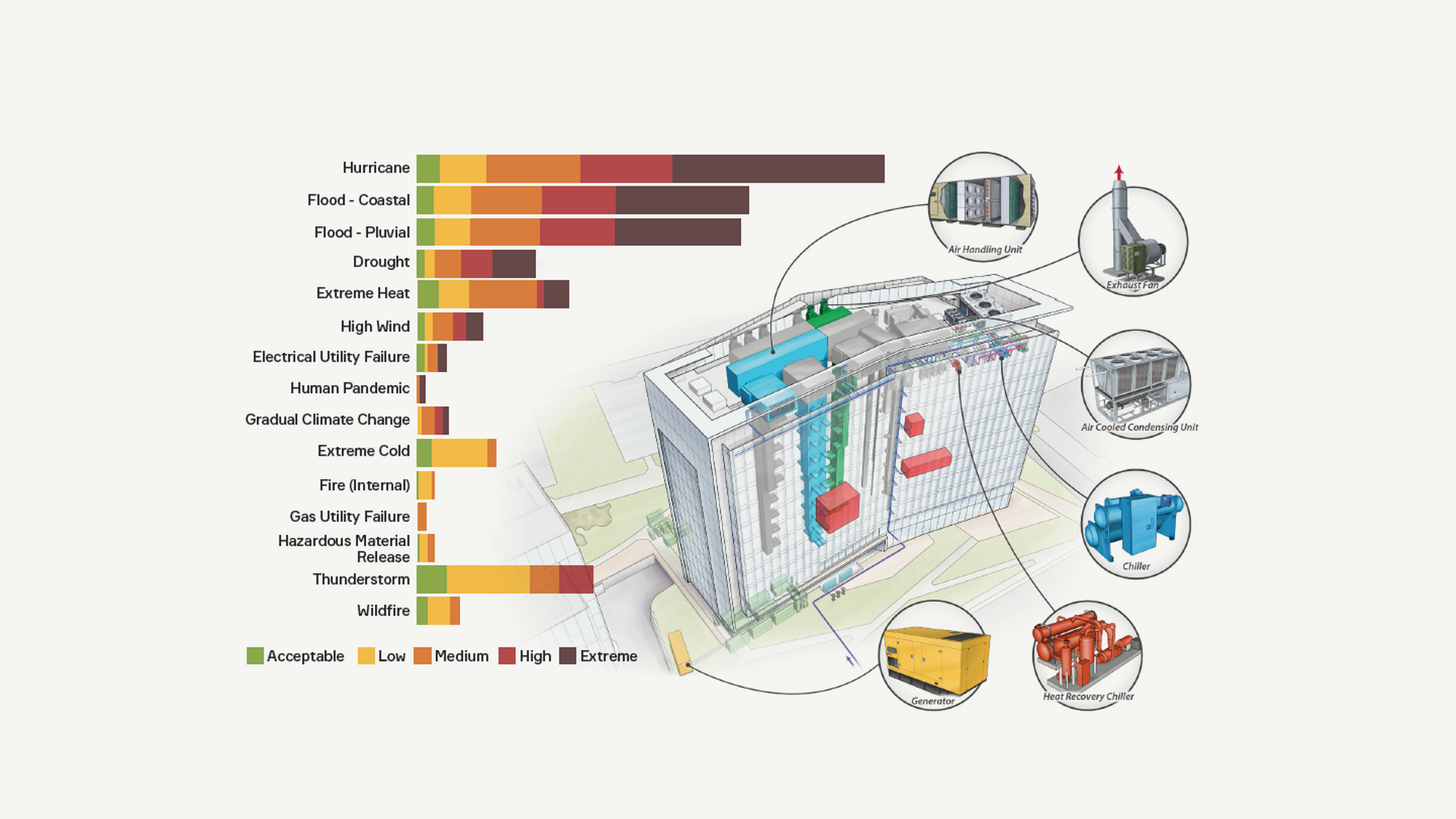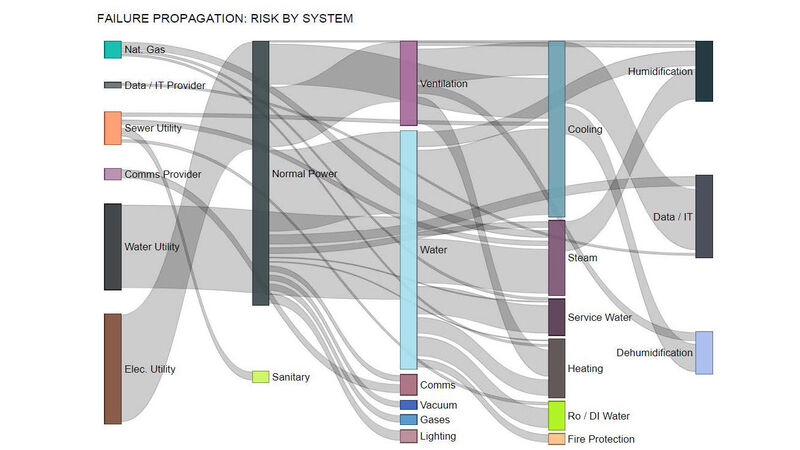
Designing Resilience
Resilience design provides the ability to mitigate and recover from the disruptions of significant natural and man-made events. While regulations and standards address resilience based on past events, the increase in scale and occurrence of disasters combined with deteriorating infrastructure have created a gap between design standards and resilience needs.
Customized and integrated into the larger design process, resilience is strategic, aligned to the owner’s articulation of critical functions of the facility. Efficiencies for energy demand and water use in normal operation, as well as effective passive design, establish its foundation.

AEI’s resilience planning and design tool. Sankey diagram tracing utility connections to building systems, used to test and illustrate vulnerabilities to hazard scale events.
In master plans or the design of complex building and energy/utility systems, climate and weather vulnerabilities and mitigation opportunities are integral to long-term planning of facility renewal and growth. Resilience design defines costs, benefits, and residual risks, to indicate optimal interventions and adaptations for reducing risk of MEP system failure in the event of a disaster scale event.